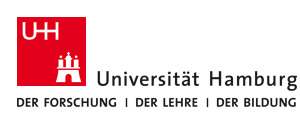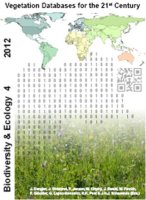Biodiversity & Ecology
Short Database Report Open Access
Database Temperate Deciduous Forests of the Prignitz Region
Keywords: abundance; forest inventory; humus form; Melico-Fagetum; pH; plant available cation; Pruno-Fraxinetum; Stellario-Carpinetum.
 English
English
Abstract: For her own habilitation Monika Wulf investigated 232 plots (vegetation relevés) in 63 mixed broadleaf forests from 1996 to 1999. The 232 plots (100-400 m²) represent alder-ash dominated stands on wet and moist sites, oak-hornbeam forests on fresh soils, and beech dominated forests on moderately fresh soils. In each plot the abundance of all vascular plants per stratum (first and second tree layer, shrub and herb layer) was estimated using the scale of Barkman. Bryophytes were noted as presence/absence data. The location of each plot was drawn in topographical maps at scale 1:25,000 with an average deviance of 100-200 m. Additionally sketches with positions of the main tree and shrub species within the plot and at the plot boundaries were drawn. It is planned for 2010 or latest 2011 to relocate plots exactly and fixing their positions by means of GPS. In a selected number of 151 plots from 55 forests soil samples were taken at three different horizons (0-5 cm, 5-10 cm, and 10-20 cm). At each plot 10 sub-samples were taken with a soil auger of 5 cm diameter, and were mixed separately for the three horizons to one sample. The soil samples were used to estimate the pH using a CaCl2-standard solution, and to determine the amount of the plant available cations Ca, K, Mg and P using an ammonium-acetate-solution. Determination of the cation concentrations were made with a spectral photometer and an atom-absorptions-spectrometer (AAS), respectively. For at least 80% of all plots site nutrient and moisture regime as well as humus nutrient and moisture regime were compiled from maps of the forest site inventories of the 1950s and 1960s. This report describes the available content in the vegetation Database Temperate Deciduous Forests of the Prignitz Region (GIVD ID EU-DE-006).
Suggested citation:
Wulf, M. (2012): Database Temperate Deciduous Forests of the Prignitz Region. – In: Dengler, J., Oldeland, J., Jansen, F., Chytrý, M., Ewald, J., Finckh, M., Glöckler, F., Lopez-Gonzalez, G., Peet, R.K., Schaminée, J.H.J. [Eds.]: Vegetation databases for the 21st century. – Biodiversity & Ecology 4: 349–349. DOI: 10.7809/b-e.00140.


